(See earlier posts from April 2016 if you would like to read more on this erosion control)
After the volunteers and Trust’s effort to try and bring some improvements to the eroding banks at Kilkerran on the Girvan earlier this Spring, Muir and I revised the site this afternoon to see how things were shaping up. With a fairly large spate towards the end of last week, the river was dropping back and we were keen to see if there had been any damage to the sections of green engineering that we had installed.
Fortunately, the work we completed appears to be doing very well and the willow has rooted well offering considerably improved protection against big floods and high water.
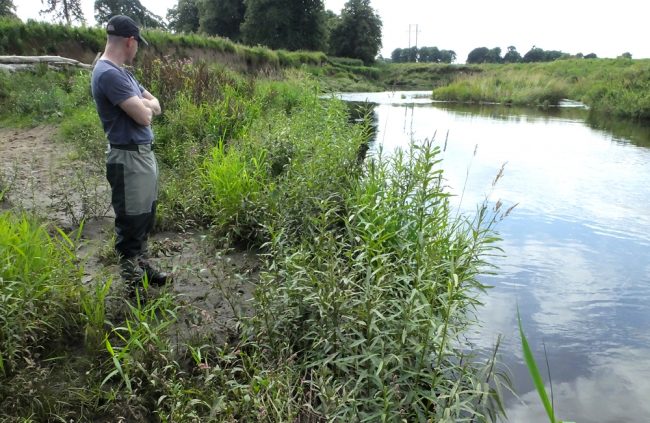
Willow bundles staked into the river bank have rooted and shoots will offer protection to the eroding bank behind during high water
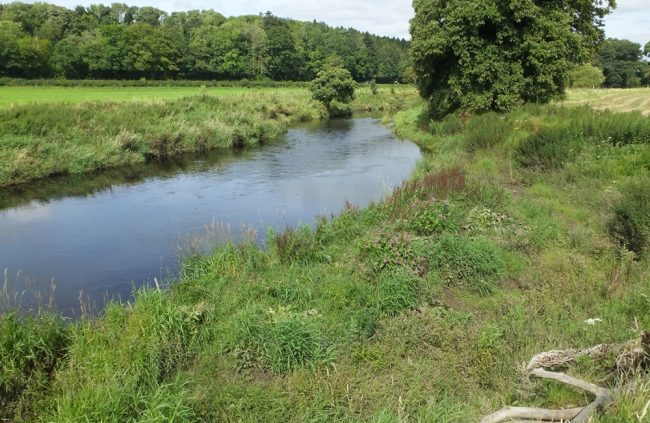
The contrast between the earlier photo below and now couldn’t be more stark.
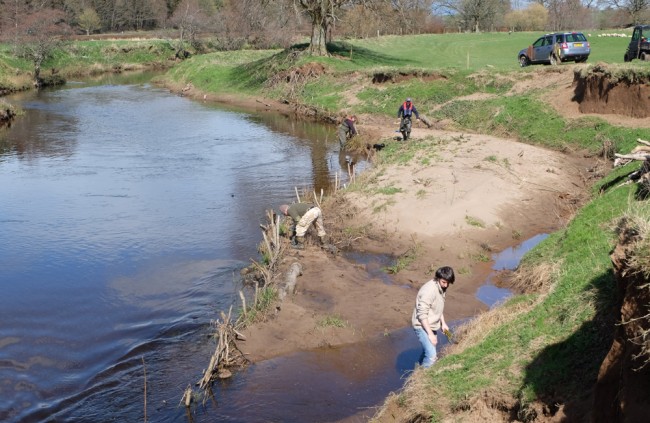
Almost the same view as above but back in April this spring. Gary can be seen planting willow cuttings amongst the previously installed hazel spilling. Charlie was plugging cuttings into the collapsing bank while Muir and Gordon installed faggot bundles at the top of the stretch.
In the upper section, we added willow bundles staked into the river bank. We only installed a short stretch of this to compare it with the hazel spilling that the fishing syndicate had previously installed. The results with the willow look favourable as there is a living wall of green shoots which will help to hold the bank and reinforcement together as it grows over the next few years. The hazel spilling has worked too but is more prone to water washing through it as has happened in a couple of a places. I expect that a few more willow bundles installed here will improve the results considerably.
Further downstream we installed woven spilling rather than bundles to compare the two techniques. Spilling is a slower process than staking bundles/faggots into place but I think the results are even better and worth the extra effort but time will tell.
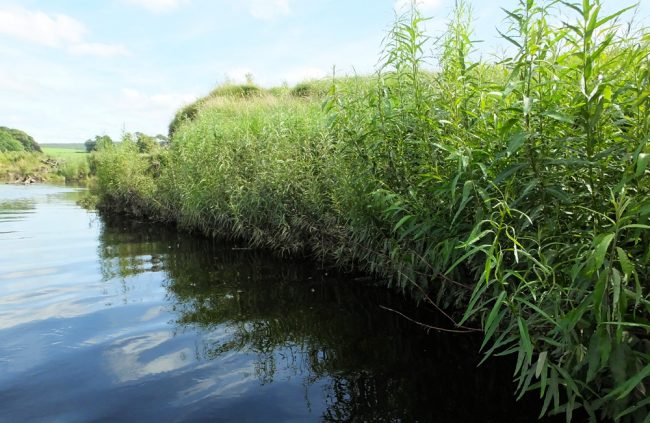
This willow spilling took longer to install than the bundles however they appear to offer a more dense and stronger solution. Compare this to the image below that was taken on the day we installed this spilling.
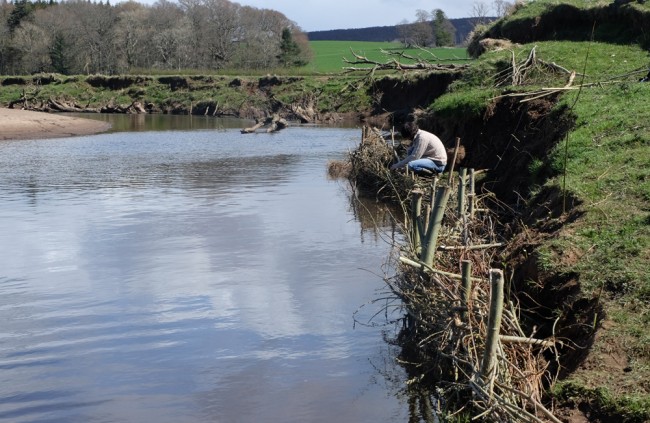
The same section of river bank as in the last photo but on the day it was installed 4 months ago. Perhaps not the neatest spilling but very effective all the same. A good result so far but will it stand the test of time?
Gary Anderson spent a fair bit of time taking willow cuttings and planting them onto the bare soils and steep banks. These cuttings are doing well and many have started to bush. These will be invaluable in the years to come as their roots bind the soil together and prevent further collapse. Cutting erosion will bring improved water quality and spawning if more problem areas can be treated in similar ways.
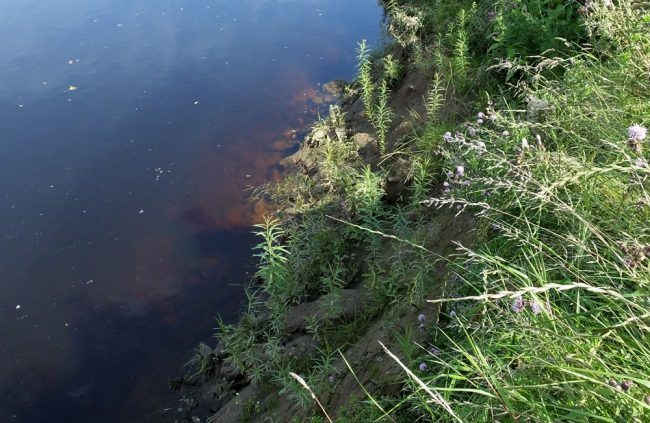
Gary Anderson’s cuttings are doing well and should start to protect the bank within a year or two.
Sadly, we noticed a few Himalayan balsam plants on the stretch and pulled a few but the seed heads are ripe and popping so we decided it best to leave them and encourage the landowners and syndicate to tackle this plant effectively next summer.

A bee about to land on a Himalayan balsam flower
All in all the work the Trust and volunteers have done at Kilkerran is a good example of low cost bank stabilisation that could be replicated wherever banks are eroding however, preventing the cause of the problems in the first place would be more beneficial. Kikerran beats were straightened over 100 years ago and the river is now trying to cut it’s way to a more natural shape of channel. Livestock access was also instrumental in weakening the banks. Excluding sheep and cattle from river banks entirely brings immediate benefits and cuts inputs. Avoiding engineering and dredging works to straighten rivers appear obvious these days however, some rivers more than others have suffered from morphological alterations of this type before. Restoring natural type morphology and processes can be achieved but care is essential and it’s always better to contact the local SEPA office for guidance should you be considering work of this nature.

